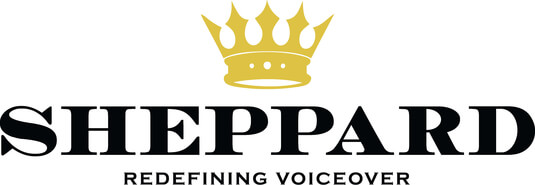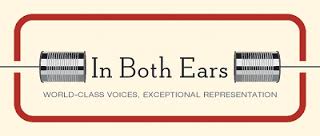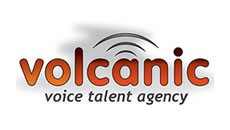The Man
with the Golden Voice
|
When Harlan Hogan
speaks, millions listen ...and buy. By Judy Marcus Chicago Tribune |
It's a warm, sunny morning, but you wouldn'st know it in the darkened, soundproof recording booth where Harlan Hogan stands. With lips close to the microphone, Hogan performs
his art, making phrases like "analysis by market," and
"search criteria" sound as captivating as a Frank Sinatra love
song.
As a voice-over actor, Hogan's off-screen work in radio and TV commercials for such companies as Kraft, Cadillac, Ameritech, McDonald's, Budweiser, and Motorola to name but a few have made him a familiar voice in American homes. It's a voice also heard on countless industrial and educational films, movie trailers, recorded books, and corporate phone systems. Hogan even did the narration that you hear at the top of the Sears Tower and the Adler Planetarium in Chicago.
Scratching his blondish-gray beard, Hogan
finishes the recording session at Studiomedia in Evanston, Illinois,
quickly, in less than the standard hour for which he was booked. But
that's not unusual for him.
"Harlan
is intelligent," said Stacy Irwin Christie, the creative director who
hired Hogan to read the copy for this session.
"You have to do very little direction because he just gets it,
assimilates it."
Bouncing into his Jeep Grand Cherokee,
Hogan heads south. A half-hour later, he's at Swell Pictures, a post-production
facility located steps off Chicago's magnificent mile. Occupying the
entire 18th floor of glitzy NBC Towers, Swell is, well, swell.
It's the kind of place one imagines exists only in L.A., where
Spielberg-types edit their latest blockbusters. Across from the vast
reception area is a 20-foot-long, granite-topped bar where directors, ad
agency creative honchos, corporate marketing execs, and voice-over talent
can grab their favorite flavor of Starbucks coffee on tap. Floor-to-ceiling
refrigerated cases with enormous glass doors reveal shelves heavily
stocked with assorted free snacks.
Hogan
sips an Espresso and then he's carted off to one of Swell's numerous
recording studios. The associate creative director of a major ad agency
and the audio engineer are there to greet him. Things are
getting set up, and Hogan banters briefly with his clients. At $350-$425
an hour for studio time, he knows intuitively when to cease and desist.
With a signal from the engineer, Hogan's, in
the booth, script in hand. The commercial he's recording is for a new
videoscopic surgical procedure that will be advertised by hospitals
nationwide. Images for this ad flash across a video monitor as Hogan's
rich, smooth, mellow voice reassures the listener that the operation can
cure "chronic heat burn" and "change your life." After
a few minor changes: emphasize "can," change "hospital
stays" to "hospital stay" everyone's happy, and Hogan is
out the door.
It's great work if you can get it. And
Hogan gets it all right. Perhaps one of the reasons is because, in a
certain sense, he's been preparing for this job for a very long time.
Painfully shy at age 9, then "Bobby" Hogan (he went by his middle name "Bob" until he was told that
the name "Bob Hogan" was already taken by another actor) became
fascinated with magic and performed tricks for his family in their
Lansing, Illinois, home. He later convinced his parents to buy him a tape
recorder as an eighth-grade graduation gift. Purchasing the $45 recorder
was a bit extravagant for his middle-class, Irish-American family
(Hogan's father was a steelworker and his mother taught ballet and tap in
the basement) but it turned out to be a wise investment for their son. The
teenager became enthralled with the "studio" he set up in his
bedroom, recording himself and friends reading old radio plays he found at
the local library.
As an undergraduate majoring in theatre
arts at Illinois Wesleyan University, Hogan moonlight-ed as a full-time
DJ at a local radio station. A few years after graduation, he landed a
position at a Chicago ad agency, teaching executives how to do speech
presentations. After being asked to record numerous scratch-tracks (demo
tapes of potential tele-vision commercials), a seed was planted. "I
thought to myself, I can do this," he says.
In 1973, he took a better paying position as an ad manager at a video-computer training company, but the desire to perform gnawed at him, and he started acting in Community Theater at night. He returned to radio-DJ work in 1976, but hungered for a greater challenge. Recording a demo tape, Hogan went to auditions and pounded the pavement. Industrial shows, local on-camera commercials, and training films soon followed. But it was the voice-over work where he really sparkled and eventually gravitated toward almost exclusively.
The extent of TV and radio commercial voice-over work he has done over the past three decades sometimes amazes even Hogan. Once, in a Twilight
Zone like experience, he got a ticket for being in the wrong lane and the
judge ordered him to watch a traffic-safety film that Hogan himself had narrated.
Margaret Travolta, a top female voice talent and John Travolta's sister, described Hogan's voice as "warm," "authoritative," "laid back," "calming," and "soothing."
"It's the voice of trust," adds Chicago audio engineer Stephen Wilke.
Hogan, who says he never thought he had a great voice, says, "I think I sound like somebody you might know.
Maybe the guy next door."
"Yes, he has a great voice, but it's what he does with it that makes
him so good," says David White, creative director and vice president
of Chicago ad agency Ebel Dunnell Merrick, Inc.
"There are other guys who sound great on a tape and then can't
deliver in the session. With Harlan, you know he will give you exactly
what you're looking for and do it quickly, within a couple of
takes. He understands the subtleties and yet also brings his own
interpretations."
Still there's a little something more that contributes to Hogan's
attraction. It's what some of his
Hogan's popularity hasn't been without effort. A tireless promoter, he
doesn't wait around for the phone to ring. He is known for his Harlan
Hogan stopwatches; clever, kooky calendars poking fun at the ad biz, and
now his illustrated mouse pads. Whatever the item, his telephone number is
featured prominently.
Yet in a fiercely competitive business in which only a handful of people
are able to make a full time living, Hogan is unusually generous. "If
he can't do a job he'll always recommend someone else," says
Travolta.
Along the way, Hogan has accumulated a few testosterone inspired toys only
an affluent person in his position could afford -
a black, Batmobile-like BMW motorcycle and a vintage Bentley. Yet
he remains solidly down to earth. He and his wife of 11 years, Lesley,
live in a charming, English-cottage style house on two and a half wooded
acres in a quiet northern suburb. Much of his free time is spent there
with his two teenage sons from a previous marriage. He had a state-of-the-art digital recording studio built into his residence, and
now Hogan records about 35 percent of his work there.
Hogan still has more goals to pursue -- narrate more documentaries, do
live theater again and more on-camera work, including movies. Presently,
he is featured in a television spot for the Chicago Tribune in which he's
champing down on a cigar while sitting in a bathtub. It was the first time
his face has been seen in a television commercial in 15 years. Other on-camera ads have followed, with Hogan portraying a physician for
Advocate Heath Care and a proud father for Illinois Tourism, and
"Ally McBeal" Director, Mel Damski cast him for the CBS TV Show
"Early Edition." Ironically, Hogan played an emcee speaking into; you
guessed it - a microphone!
Judy Marcus is a free lance writer who lives in Glencoe, Illinois







